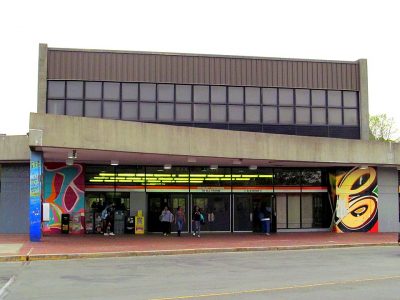Mission Hill Neighborhood Housing Services has started construction on redeveloping a former Massachusetts Bay Transportation Authority property into 46 affordable housing units in Mission Hill.

Phase 2 of the Parcel 25 project will sit across from the Roxbury Crossing MBTA station and close to bus stops, allowing easy access to transit, according to a City press release. Crews will also build underground parking and a pedestrian plaza.
The City contributed $2.55 million toward Phase 2, the press release stated. Low-income housing tax credits from the Massachusetts Department of Housing and Community Development, along with its affiliated organizations, contributed more than $4 million in total.
$1.25 million of the City’s contributions came from Boston Children’s Hospital. A Hospital spokesperson wrote in an email that BCH saw the importance of giving families and children a place to live.
“Boston Children’s Hospital is focused on being a good neighbor to our surrounding communities,” the spokesperson wrote. “We recognized Mission Hill needs additional affordable housing and we offered to help with the financing for the Parcel 25 project.”
The Department of Neighborhood Development, Massachusetts Department of Housing and Community Development and Massachusetts Housing Investment Corporation also contributed to the project, along with Eastern Bank and Boston Private Bank and Trust.
Metro Housing Boston, which offers housing programs and funds to those who struggle with paying for rent, worked with MHNHS during Phase 1 to create its headquarters at One Gurney Street.
Anne Rousseau, Metro Housing’s chief financial officer, said moving to the new headquarters has benefitted the older and newer residents that the organization serves.
“Our walk-ins, which are people that are not already being provided services and need a little help or are already being provided services and need a little help, increased,” Rousseau said. “It’s more than doubled from our move. I think that’s because it’s easier access for people to come and see us. They don’t have to go all the way downtown.”
Rousseau said Metro Housing hopes to manage units built during Phase 2 for formerly unhoused individuals.
A mix of one- to three-bedroom units will be built for people earning at or below 60 percent of the area median income, with 11 of the units set aside for families and individuals below 30 percent of AMI — with specific conditions — and one two-bedroom unit for families making between 31 percent and 50 percent of AMI.
Building designers at Goody Clancy Architecture considered affordability and efficiency, such as energy-saving features, while creating the designs for the Roxbury Crossing development.
Robert Chandler, principal at Goody Clancy, said the firm asked for neighborhood input.
“Mission Hill Neighborhood Housing Services led a process asking community members essentially what they wanted,” Chandler said, “and came away with a goal of producing mixed-income housing, or permanently affordable housing, some retail and some uses that would provide employment.”
By the end of the construction period, which is scheduled for the fall of 2021, the Roxbury Crossing building will include features for long-term sustainability, according to the press release.
After seeing Phase 1 transform an empty plot to a neighborhood home, Rousseau said she thinks Mission Hill has revitalized the area and hopes the momentum will continue with Phase 2 as well.
“You have a lot of activity, young people on the streets not only getting lunch, and coffee in the morning, but some of them staying and having dinner afterward,” Rousseau said. “I think it brought back vitality to the neighborhood.”






















































































































